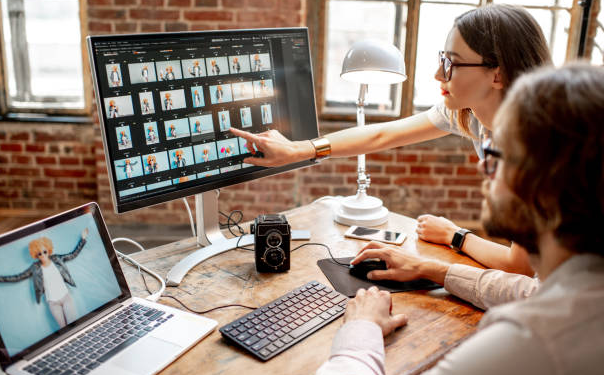In the digital age, where photography plays a significant role in our lives, the ability to edit and enhance photos has become an essential skill for photographers and enthusiasts alike. The art of photo editing allows us to transform ordinary images into extraordinary works of art, refining their composition, improving their quality, and adding a touch of creativity to captivate viewers.
This guide is your gateway to mastering the art of photo editing. Whether you’re a beginner looking to enhance your vacation snapshots or an experienced photographer aiming to take your images to new heights, this comprehensive resource will equip you with the knowledge and techniques necessary to unlock the full potential of your photos.
Editing and enhancing photos is a popular practice to improve the overall quality, composition, and visual appeal of images. There are various photo editing software options available, each with its own set of features and techniques. In this guide, I’ll provide an overview of essential photo editing software and some techniques you can use to enhance your photos.
1. Selecting the Right Photo Editing Software:
Adobe Photoshop: Considered the industry standard, Photoshop offers a wide range of tools and capabilities for advanced photo editing.
Lightroom: Primarily used for organizing and editing large collections of photos, Lightroom is great for enhancing multiple images efficiently.
GIMP: A free and open-source software, GIMP provides powerful editing tools and is a good alternative to Photoshop for basic to intermediate editing needs.
Pixlr: An online photo editor with a user-friendly interface, Pixlr is a convenient option for quick edits and enhancements.
2. Basic Photo Editing Techniques:
Cropping and straightening: Adjust the composition by cropping out unwanted elements and straightening the horizon.
Exposure and contrast: Enhance the overall brightness, shadows, highlights, and contrast to make the image visually appealing.
Color correction: Adjust the white balance, saturation, and vibrancy to achieve accurate and vibrant colors.
Sharpening: Enhance the details and sharpness of the image to make it look clearer and more defined.
Noise reduction: Reduce the digital noise or graininess in photos, especially in low-light or high-ISO situations.
Retouching: Remove blemishes, wrinkles, and other imperfections using the clone stamp, healing brush, or patch tool.
Dodge and burn: Brighten or darken specific areas of the image to create depth and enhance details.
Vignetting: Add or reduce the vignette to draw attention to the subject or create a dramatic effect.
3. Advanced Photo Editing Techniques:
Layers and masks: Use layers to stack and blend multiple adjustments and effects. Masks allow you to selectively apply edits to specific areas of the image.
Filters and effects: Experiment with various filters, such as black and white, vintage, or HDR effects, to give your photos a unique look.
Photo manipulation: Combine elements from different photos or create surreal compositions using advanced selection and blending techniques.
Portrait retouching: Smooth skin, whiten teeth, brighten eyes, and enhance facial features while maintaining a natural appearance.
HDR imaging: Merge multiple exposures of the same scene to create an image with a wide dynamic range and rich details.
4. Workflow and Saving:
Start with a backup: Always work on a copy of your original photo to preserve the original file.
Non-destructive editing: Use adjustment layers or non-destructive editing techniques to retain the flexibility of adjusting or reversing your edits later.
Save in the appropriate format: For web sharing, use JPEG format with an appropriate compression level. For high-quality printing or further editing, use TIFF or PSD formats to preserve maximum image quality.
Conclusion
Editing and enhancing photos is a creative process that can significantly improve the quality and visual impact of your images. By using the right photo editing software and employing various techniques, you can transform your photos into stunning visual compositions.
When it comes to photo editing software, Adobe Photoshop is widely regarded as the industry standard, offering a vast array of powerful tools and features. Lightroom is another popular choice, especially for managing and editing large collections of photos efficiently. GIMP and Pixlr are also valuable options, providing robust editing capabilities for different skill levels and budget considerations.
Some essential photo editing techniques include cropping and straightening to refine composition, adjusting exposure and contrast for better tonal balance, color correction for vibrant and accurate colors, sharpening for enhanced details, noise reduction for cleaner images, and retouching to remove imperfections. Advanced techniques involve working with layers and masks, applying filters and effects, and performing photo manipulations and HDR imaging.
FAQ’s
1. What is the best photo editing software?
The best photo editing software depends on your specific needs and preferences. Adobe Photoshop is widely regarded as the industry standard for its extensive features and capabilities. Other popular options include Lightroom for managing and editing large photo collections, GIMP for a free and open-source alternative, and Pixlr for quick online editing.
2. How do I choose the right software for my needs?
Consider factors such as your level of expertise, desired features, budget, and compatibility with your operating system. Try out different software options by using free trials or exploring online demos to see which one feels most comfortable and meets your editing requirements.
3. What are some basic photo editing techniques I should learn?
Basic techniques include cropping and straightening, adjusting exposure and contrast, color correction, sharpening, noise reduction, retouching, dodge and burn, and vignetting. These techniques can significantly enhance the overall quality and visual appeal of your photos.
4. Are there any advanced techniques I can explore?
Yes, advanced techniques include working with layers and masks, applying filters and effects, photo manipulations, and HDR imaging. These techniques provide greater control and creativity in editing and can help you achieve unique and striking results.
5. How can I improve my photo editing skills?
Improving your skills requires practice and experimentation. Explore tutorials and online resources, study the work of other photographers, and constantly challenge yourself to try new techniques. Develop your own editing style by experimenting with different adjustments and effects.
6. Should I edit the original photo or make a copy?
It is generally recommended to work on a copy of the original photo to preserve the integrity of the original file. This way, you can always go back to the untouched version if needed. It also allows you to experiment freely without the fear of losing important data.
7. How can I save my edited photos?
The choice of file format depends on the intended use of the photo. For web sharing, JPEG format with an appropriate compression level is commonly used. For high-quality printing or further editing, TIFF or PSD formats are preferred to retain maximum image quality.






























